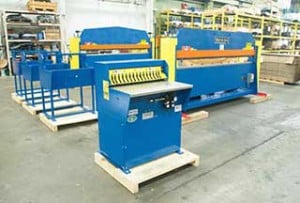Growing your business is an instinctive desire but, as we know, the perils can often outweigh the opportunities. “Risks abound at every turn,” notes business lawyer and author Andrew J. Sherman in The Complete Guide to Running and Growing Your Business, stressing that “meaningful, long-term, profitable growth is a by-product of effective management and planning.”
The multifaceted HVAC industry provides an excellent illustration of the challenges that face small, medium and large organizations seeking to grow. Just look at the array of products and applications, the variety of machinery in HVAC shops, the need for highly-skilled technicians, and the many financing choices for expanding, ranging from small bank loans to large public offerings.
So, to take an example from the HVAC world, what are the prospects for a small business that started in the residential construction sector and wants to expand into commercial construction? On the surface, the two sectors are not too different. Both need air conditioning, furnaces, exhaust and ventilation, duct works, structural steel work, sandblasting and protective coatings.
However, that’s where the similarity usually ends, or so it would appear. Size, scale and complexity take over. For example, commercial HVAC units generally require more physical space, different drainage systems, and are often located on the roof and not on the ground. As a result, the corresponding ductwork, materials, and shapes produced to fit a building’s architecture have different production standards – and that could mean that an HVAC manufacturer aiming to incorporate or change to commercial projects will need to make a significant investment in new machinery.

Roto-Die machinery comes in a variety of models to fit the workshop and the applications
Luckily, that’s only true in some cases. Roto-Die equipment, for example, has been designed and built to fit applications in both residential and commercial markets. Some machinery, like our Model 10 hydraulic bender, can accommodate materials that are more “medium” in terms of physical dimensions and thickness, and can thus serve as an effective addition to most workshops. It also serves as a more affordable alternative to expensive CNC equipment for general sheet metal fabricators.
There are still some machines that are more suited for specialized projects, however. Roto-Die’s 12-foot Model 15/12 metal bender is great for metal roofing and commercial siding contractors. For duct work, the SMACNA beader is used for both residential and commercial HVAC ducts. Also complementing Roto-Die’s machinery are the coil lines, roll formers, and slip & drive notchers. Further, Roto-Die can rebuild machines, provide a new or remanufactured Roto-Die for a trade-in. The list goes on.
In short, versatility and compatibility are Roto-Die watchwords, which should make the idea of expanding from residential into commercial a much easier decision. Having options available saves you from having to sacrifice quality or delay your growth. Reminds us of that famous song, “Make It Easy,” by the progressive 1980s rock band Yes… especially since the song’s original title was “Don’t Give In!”
To see the selection of Roto-Die fabrication tools that fit a range of business models and project applications in the HVAC industry, click here.

